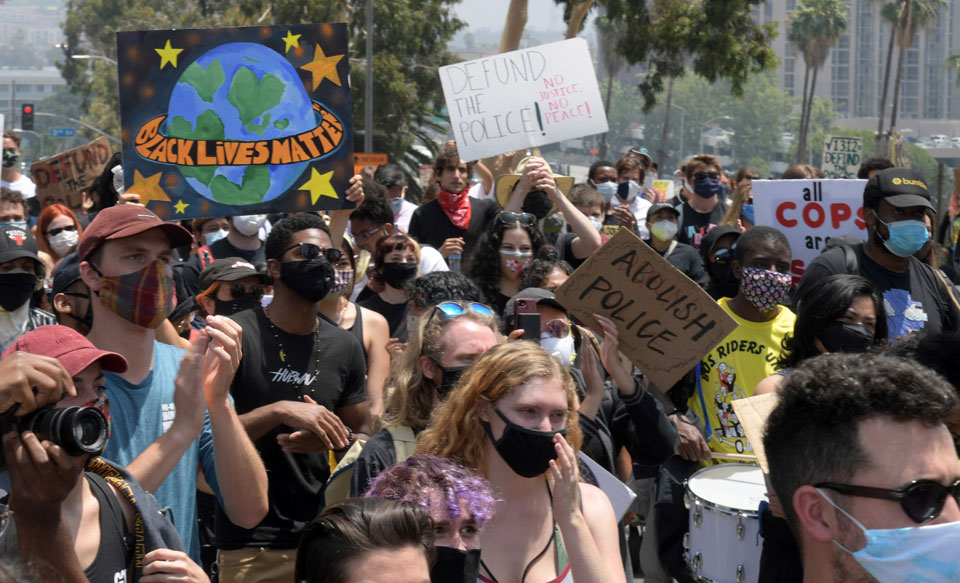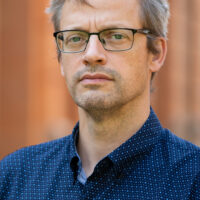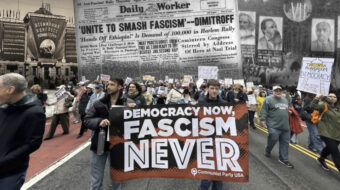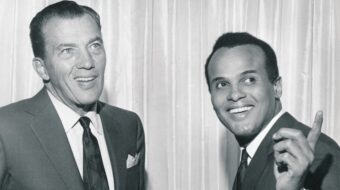
Derecka Purnell is a gifted intellectual, organizer, speaker, and writer. She completed her degree at Harvard Law School after growing up in the #BlackLivesMatter struggles in St. Louis, Kansas City, and Ferguson, Missouri. Part autobiography and part smart sociological analysis, Becoming Abolitionists: Police, Protests, and the Pursuit of Freedom documents her evolving philosophy of abolition. Abolition is the opposition to the foundational roles of white supremacy, capitalism, heteronormative patriarchy, and settler colonialism as causes of state violence enacted through the police, courts and prisons. Abolition demands an end to the prison-industrial complex and the “job creation program” known as the police.
This gripping narrative is destined to become a classic reflection on our moment in history. It describes Purnell’s transition from an activist who focused on police reform to the recognition that the “armed wing of the state” cannot be reformed. Purnell closely connects her experiences growing up in poor and working-class sections of St. Louis to the highly advanced political positions she learns later in life. Environmental racism, police violence, unemployment, denial of access to health care, inadequate educational opportunities, and roadblocks of opportunity for Black people in her communities lie at the heart of the experiences that shaped both her life as an organizer as well as the knowledge that police and prisons simply do not solve violence: They do not protect communities, and are not what working-class people of any racial or ethnic background deserve.

Many of the events traced in the book are closely connected to how Purnell witnessed the ongoing racist violence, from the slayings of Trayvon Martin, Jordan Davis, Michael Brown, Eric Garner, Freddie Gray, Sandra Bland, and so many others. Killed by police or by angry white men bent on racist revenge, the murders sparked the anger first of local communities in Ferguson and Baltimore in 2014. It then exploded into a national revolt in 2020 after a viral video showed Derek Chauvin deliberately killing George Floyd while three other officers stood by refusing to intervene. The cruelty and violence of stalker-killers like George Zimmerman, Michael Dunn, Kyle Rittenhouse, Travis McMichael, William Bryan, and Gregory McMichael, not only seemed closely linked to the militaristic fantasies of mass killers like Jeremy Joseph Christian, Nikolas Cruz, Chris Kyle, and Timothy McVeigh, but also to the right-wing white supremacist militias that often seemed to be in close collaboration with the police.
Like many of her comrades and compatriots, Purnell wanted to reform a system that seemed to be rooted in justice but dominated by bad people. “We can fix this” was the mantra of the reform-minded activists who occupied the streets of Ferguson, facing down police tanks, tear gas, and rubber bullets. This desire for justice propelled the young, brilliant Purnell to pursue the legal profession as a site to battle injustice and white supremacy. Her life journey, however, led her to realize that “[t]he same system responsible for our oppression cannot be the same system responsible for our justice.” As much as they fought, exposed, and held the moral high ground over racist police violence, they never seemed able to stop it. Something was operating here other than bad choices, bad apples, or improperly applied training, or any of the other myriad excuses deployed in the media or the halls of power to downplay the systematic brutalization of Black, Latinx, and Indigenous people at the hands of the police, the courts, and the prisons.
Concepts of criminal justice, punishment, and social justice had to be reimagined altogether, she writes. This intellectual and experiential process of discovery uprooted layers of social systems. It shifted attention from solely on the police and prisons as the source of the problem (which they are on one level) to addressing real questions that everyday people have about alternative ways of stopping violence and murder.
“What about the murderers?” a close friend asks at one community meeting. This question, which is often posed honestly, has to be addressed with complex answers and requires the abolitionist to attend to multiple stages of struggle.
Purnell describes an activity that she designed as a legal activist to help people who ask this question honestly to discover the answers. The activity asks participants to dig more deeply into the systemic and social practices that help us understand that no act, constructed by law as criminal, is simply an individual choice. No single answer is available for this question. We have to first try to answer a different kind of question: What causes people to see such acts as their best option?
When we learn that most murders, for example, are committed by men who are seeking to control a woman or stem from the desire for masculine control, we can look at the system of heteronormative patriarchy that instills the culture of male domination supported by male violence. This cultural element functions on many layers in U.S. cultures—just speaking of the U.S. here—crossing many racial and ethnic boundaries. If communities can learn to fundamentally alter this relation of domination, violence, and masculinity through education, creation of new resources, and the construction of a culture of community (a major counter to hyper-masculinized individualism), fewer men might regard interpersonal forms of violence and killing as acceptable choices. If we rebuff homophobia and transphobia and other irrational antagonisms, we can eliminate the motives that many men and boys adopt to justify bullying, interpersonal violence, and murder.
If we add to this layer a public health system that helps men overcome emotional stuntedness, they may make better choices. If white men—just to follow this trail of thought in other directions—reject white supremacy and its built-in desire to control or harm Black and Brown and Indigenous people, then violence, in direct, interpersonal and systemic forms, could be reduced. If communities have shared resources, common forms of property and productivity, shared, place-based resources to supplement their day-to-day existence, Purnell argues, anxiety, fear and rage might fuel fewer actions that men see as solutions to powerlessness.
Purnell’s activity offers community members opportunities to name the social services they need. It gives them a chance to see how the addition of resources might change people’s actions. It also gives them a basis for political demands from government and employers, from powerful corporations for fundamentally reorganizing services and social relations.
There is no magic bullet for the problem of violence. It requires a multi-layered, system-wide approach—economic justice resources, medical and mental health resources, social services—that coincides with a radical end to capitalism and white supremacy. Even those who resist the idea of abolition or are staunch believers in the racist “thin blue line” will agree there is no single solution. Yet they will defend the idea that the police—a social force designed historically to patrol slaves and to manage persistent inequality today—can solve crime through the violent punishment of people they deem to be wrongdoers. If violent punishment was a cure for violence, wouldn’t the U.S., with 5% of the global population and 25% of the world’s incarcerated population, be the safest place on earth? Some of those avid police defenders don’t really care to “solve” violence. Rather, they openly support the idea that some people—the poor, the workers, the people of color—simply are bad and should be controlled.
Purnell rejects single-issue politics in isolation. Rather, she explores international solidarity and dives courageously into revolutionary anti-capitalist politics. The struggle to defeat white supremacy to value Black lives, to give meaningful and equal weight to the existence of Indigenous people and all people of color in this society, may be at the heart of the struggle to end imperialism, militarism, and war, to build a just and equal economic order, and to empower the multiracial, multigendered, multinational working class to rule this society. Purnell offers us realistic ways to think through these possibilities. Indeed, we could start to create alternative working-class-led and community-based institutions that could strip the state of its authority to occupy and invade working-class communities of color.
While a reader may find certain aspects of her argument worthy of debate, the fundamental value of Purnell’s book and intellectual approach is one of openness: This isn’t a book of formulas and solutions. It is a narrative that shows that people can work together to discuss, co-design, and recreate the world. While the police-punishment-prison system closes off opportunities for growth and transcendence, the philosophical stance in Becoming Abolitionists centers and uplifts openness, the possibility of a liberated future, and comradeship of the people in taking on the tasks that lie on the road to that future.
Becoming Abolitionists: Police, Protests, and the Pursuit of Freedom
By Derecka Purnell
New York: Astra House (Verso), October 5, 2021
ISBN-10 1662600518
Available in hardcover, paperback, Kindle, Audiobook and Audio CD










